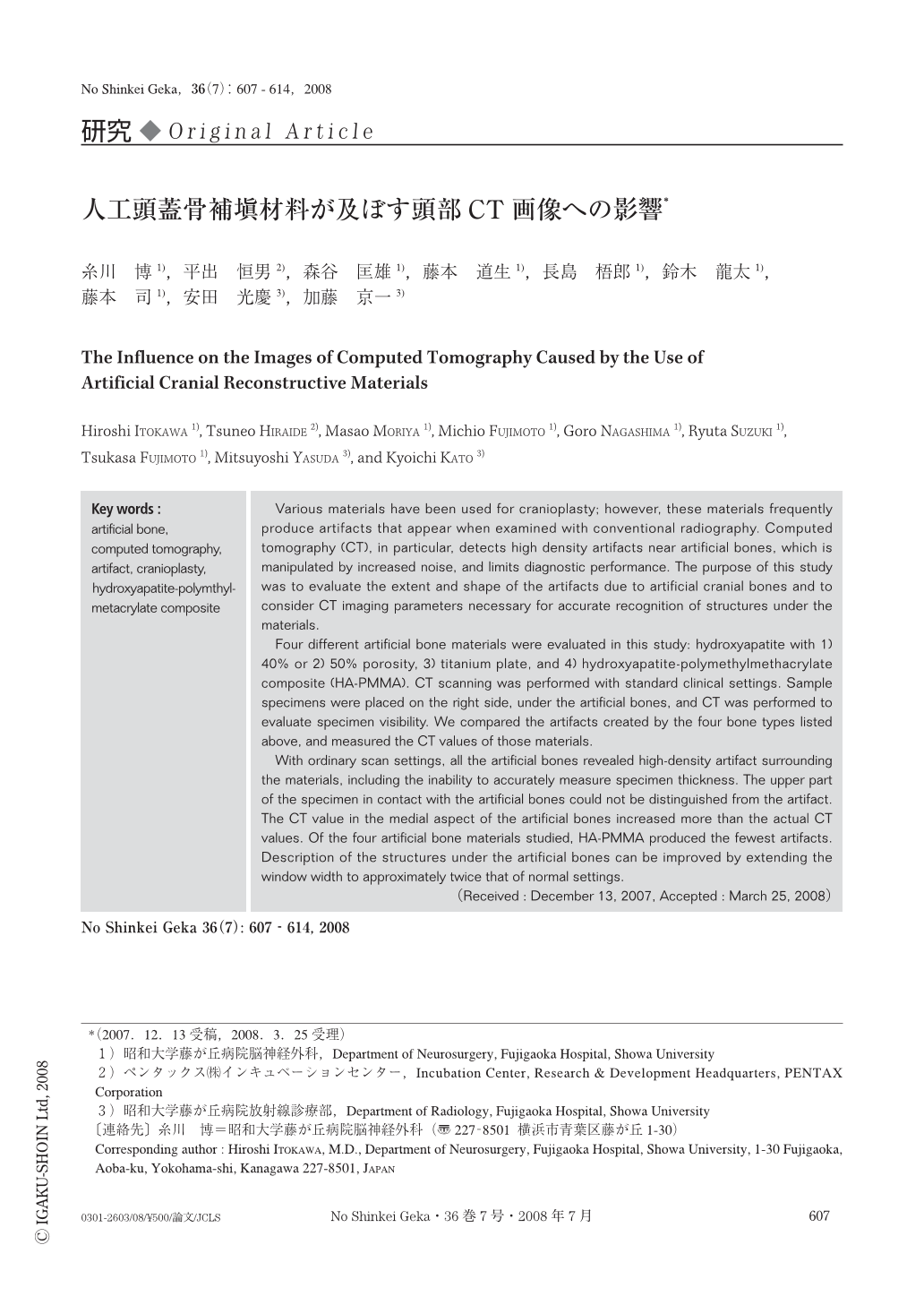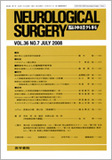Japanese
English
- 有料閲覧
- Abstract 文献概要
- 1ページ目 Look Inside
- 参考文献 Reference
Ⅰ.はじめに
脳卒中あるいは頭部外傷などに伴って行われる外減圧手術や,脳腫瘍症例などで生じた頭蓋骨欠損に対して,人工材料を用いた頭蓋形成術を行う場合があり,さまざまな材料がその再建に応用されている.なかでも優れた骨伝導能を有するハイドロキシアパタイト(hydroxyapatite:HA)や,外部衝撃に対して強いチタンやレジン(polymethylmethacrylate:PMMA)が用いられることが多く,いずれの素材においても良好な治療成績が報告されている1,5,9-11).しかしながら,computed tomography(CT)やmagnetic resonance imaging(MRI)などを用いた手術後の画像評価については,人工材料によって生じるアーチファクトが,材料直下に存在する構造物や病変を評価する妨げになることが臨床的に経験されており,人工素材を用いた再建手術におけるひとつの問題点と考えられる.そこで今回,人工材料によって生じるアーチファクトがCT画像へ及ぼす影響と,その特徴についての検討を行ったので報告する.
また今回の検討には,新たな人工骨補塡材料として開発中のhydroxyapatite-polymethylmethacrylate複合体(HA-PMMA)も加えた.この材料は,骨伝導能の高いHA と,強度および靱性に優れるPMMAを用いて,両者の持つ特性に加え,加工性と耐衝撃性を向上させた複合体材料である4).画像に及ぼす影響が未知であるため,この材料についても同様の検討を行い,他の材料との比較を行った.
Various materials have been used for cranioplasty; however, these materials frequently produce artifacts that appear when examined with conventional radiography. Computed tomography (CT), in particular, detects high density artifacts near artificial bones, which is manipulated by increased noise, and limits diagnostic performance. The purpose of this study was to evaluate the extent and shape of the artifacts due to artificial cranial bones and to consider CT imaging parameters necessary for accurate recognition of structures under the materials.
Four different artificial bone materials were evaluated in this study: hydroxyapatite with 1) 40% or 2) 50% porosity, 3) titanium plate, and 4) hydroxyapatite-polymethylmethacrylate composite (HA-PMMA). CT scanning was performed with standard clinical settings. Sample specimens were placed on the right side, under the artificial bones, and CT was performed to evaluate specimen visibility. We compared the artifacts created by the four bone types listed above, and measured the CT values of those materials.
With ordinary scan settings, all the artificial bones revealed high-density artifact surrounding the materials, including the inability to accurately measure specimen thickness. The upper part of the specimen in contact with the artificial bones could not be distinguished from the artifact. The CT value in the medial aspect of the artificial bones increased more than the actual CT values. Of the four artificial bone materials studied, HA-PMMA produced the fewest artifacts. Description of the structures under the artificial bones can be improved by extending the window width to approximately twice that of normal settings.

Copyright © 2008, Igaku-Shoin Ltd. All rights reserved.


